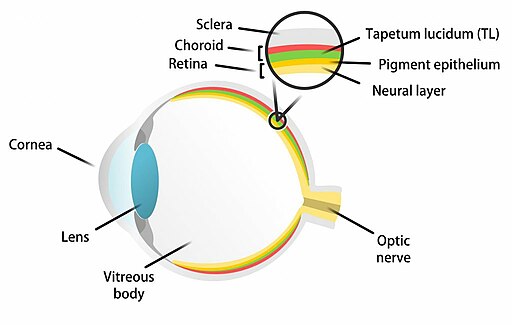Have you ever wondered how your furry friends recognize the world around them? This question was asked by a group of scientists who recently studied how canines “see” the world not only with their eyes, but also with their nose.
For a long time, the world believed that dogs could only see the world in black and white, or that dogs could only perceive color weakly, if at all. However, this myth was debunked in 1989 by ophthalmologist Jay Neitz and his colleagues, who discovered that dogs can indeed see colors, specifically blues and yellows. They cannot perceive reds and greens, similar to color-blind human.

The reason why dogs can’t process light as well as most human is because they only have two types of color-sensing receptors, called cones, in their retinas, similar to many mammals: cats, pigs, and raccoons. This differentiates them from humans which have three cones. In addition, most dogs have 20/75 vision, meaning that they need to be 2o feet away to see as clear as a human would from 75 feet. Their world may be somewhat blurry compared to ours.
To truly understand how dogs see the world, we must look beyond their ability to process color, as highlighted by Sarah-Elizabeth Byosiere. Dogs rely on various other senses to help them “see,” or identify objects and movements around them. For example, unlike humans who have difficulty seeing in dark environments, dogs’ eyes are made to see in both daytime and nighttime. This is because of their abundance of rods, a type of photoreceptor cell in the retinas, which aids in night vision. Rods are 500-1000 times more sensitive to light than cones which allows dogs to see better in the dark. Dogs also have a unique structure in their eyes called the Tapetum Lucidum(Shown in diagram below), which acts like a mirror that reflects light back onto the retina. This enables them to see in conditions with six times less light than what human requires to see.
This is also the reason why dogs’ eyes will glow in photos in the dark, because their Tapetum Lucidum reflects the light back.
(Structure of eyes)
Another significant aspect of dogs’ perception is their sense of smell, they are 10,000 to 100,000 times stronger than that of an average human. Dog’s mighty sense of smell plays a crucial role in how they perceive the world, they can even pick up odors from as far as 12 miles. Another study published recently in the Journal of Neuroscience revealed a direct connection between dogs’ olfactory bulb, which processes smell, and their occipital lobe, which processes vision. This integration of sight and smell was not observed to happen on any of other animal species.
While human are good at recognizing different colors, dogs are more into their sense of smell that humans can’t appreciate. Dogs aren’t missing out on anything; they just have their own unique way of exploring the world around them.
In AP Biology, we learned about how neurons transmit signal to the brain when we touch, hear, see, and smell. When vision and smell is received by optic nerve in eyes and olfactory sensory neurons in noses, they will pass the information of the sight and smell to the brain through neurons. Neurons transmit signals simply through a flow of ions across the axon membrane, which reverses the distribution of charges of the neuron compared to when it is at rest. This is how a neuron passes a signal to another neuron, they will repeat this process until they reach the occipital lobe and olfactory bulb in the brain where the information of the sight and smell will be processed and analyzed.
As a biology student, I have always wondered about how canines, mankind’s best friend, and how other animals see the world in their perspective. It is fascinating to find out that all animals have their unique way of sensing the world and collecting information from the area around them. Their “sensing” strategy are often different from ours’s; human primarily uses vision to receive information of the world, but our neighbors on earth could be using their sense of smell, sense of hearing, and even echoing to accomplish the same goal! Let me know in the comments below if you are also curious about how other animals recognize our world or if you are interested in this topic! Share your thoughts with me! If you want further information about this post or on this topic in general, please go to ScientificAmerican.com for more information and further research.




Leave a Reply